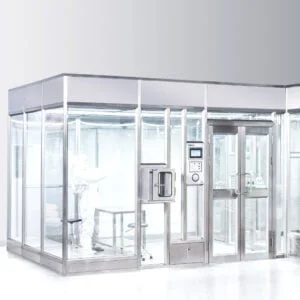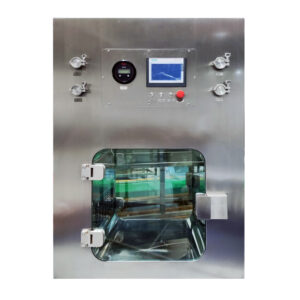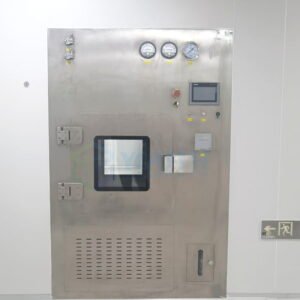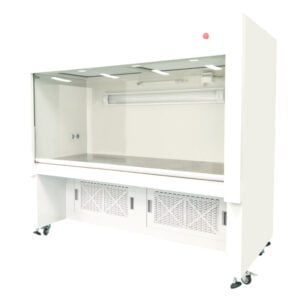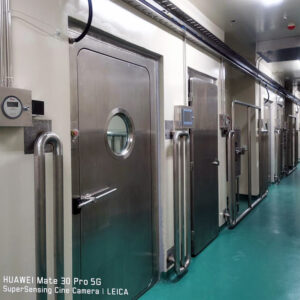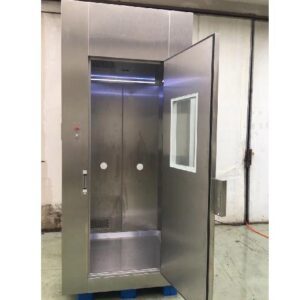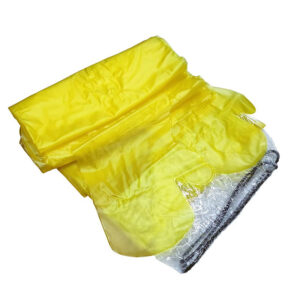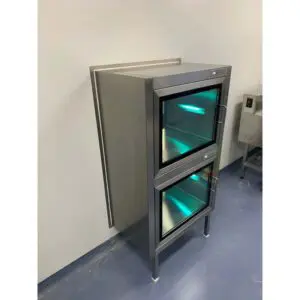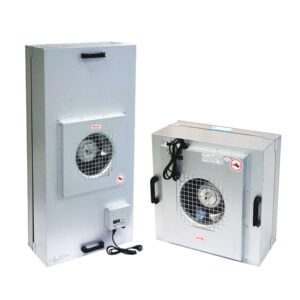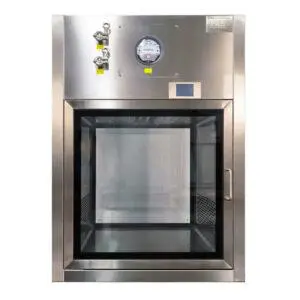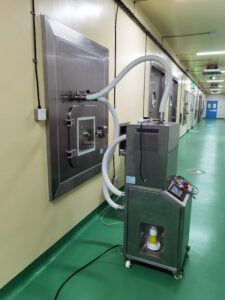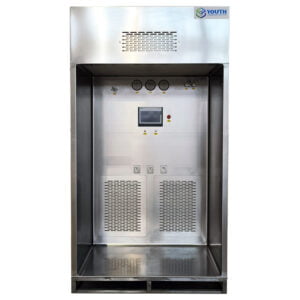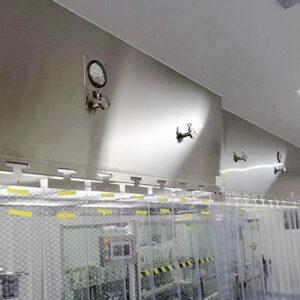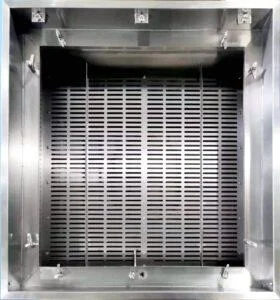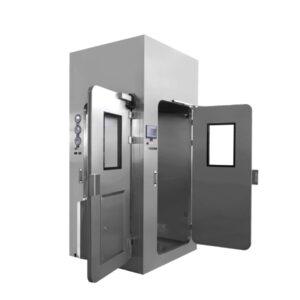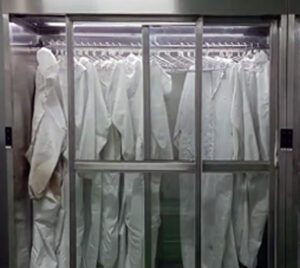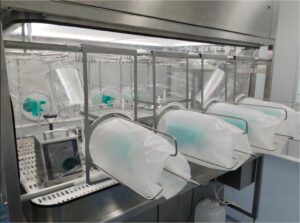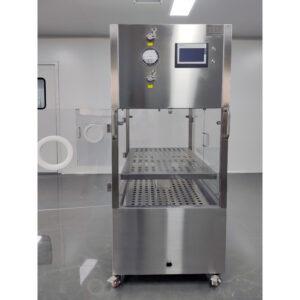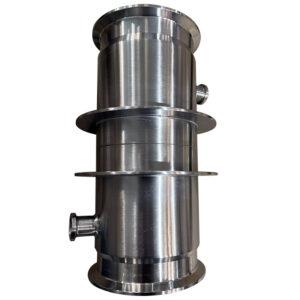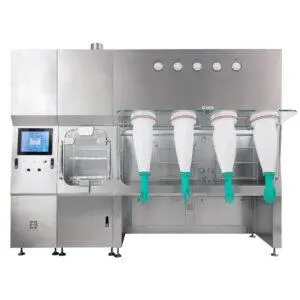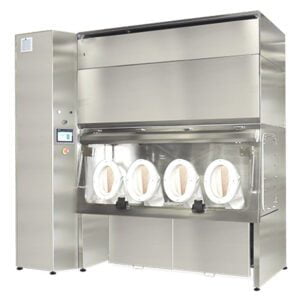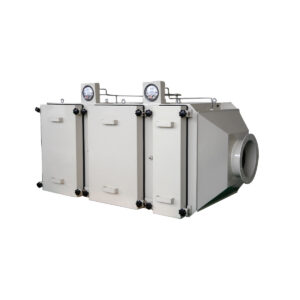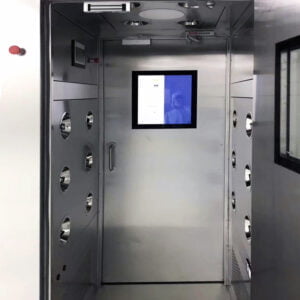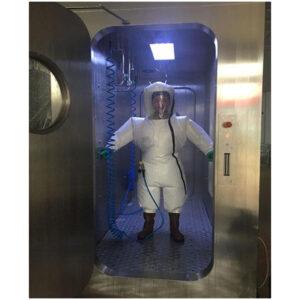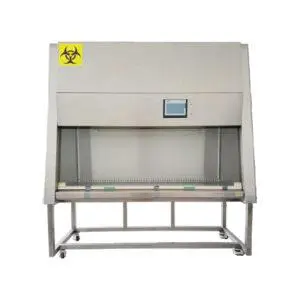In the world of advanced manufacturing, precision is paramount. Whether you are involved in semiconductor production, pharmaceuticals, aerospace, or any other field where contamination control is essential, maintaining the right temperature in your cleanroom is critical. In this comprehensive guide, we will delve into the intricacies of controlling cleanroom temperature and why it matters.
Introduction
What Is a Cleanroom?
Cleanrooms are highly controlled environments designed to minimize particulate contamination and maintain consistent environmental conditions. They are used in various industries, including pharmaceuticals, electronics manufacturing, biotechnology, and aerospace, where even tiny particles can lead to product defects or compromised research.
The Role of Temperature Control
Temperature control in cleanrooms is not just about comfort; it’s a critical factor in maintaining product quality, process integrity, and personnel safety. Cleanrooms must operate within specific temperature ranges to meet industry standards and regulatory requirements.
Ideal Temperature Range
Setting the Standard
In general, the ideal temperature for a cleanroom falls within a narrow range. It is typically around 21 degrees Celsius (70 degrees Fahrenheit), with a variance of no more than 2 degrees in either direction. These standards ensure a stable environment for sensitive processes and equipment.
Variations in Different Industries
However, different industries may have unique requirements. For example, aerospace cleanrooms often have a temperature range of 67°F to 77°F (19°C to 25°C) to accommodate specific manufacturing needs.
Humidity’s Role
The Symbiotic Relationship
Humidity and temperature are closely linked within cleanrooms. Controlling one can impact the other. Lowering the temperature can decrease humidity, while humidification can raise it. Finding the right balance is crucial to maintaining a stable environment.
How to Balance Temperature and Humidity
Air conditioning systems are commonly used to control humidity levels in cleanrooms. By adjusting the cooling process, it’s possible to dehumidify the space effectively. This delicate balance ensures that sensitive processes are not compromised.
Why Cleanroom Temperature Matters
Controlling Contamination
One of the primary reasons for precise temperature control in cleanrooms is contamination prevention. Maintaining a stable temperature reduces the likelihood of airborne particulates becoming more mobile due to thermal effects.
Managing Static Electricity
Cleanroom environments often include sensitive electronic components. Temperature control can help manage static electricity, reducing the risk of electrostatic discharge (ESD) that could damage critical equipment.
Ensuring Personnel Comfort
Lastly, cleanroom personnel spend significant time in these environments. Maintaining a comfortable temperature is not just a matter of convenience; it’s essential for their well-being and productivity.
Methods for Temperature Control
Modular Cleanrooms
Modular cleanrooms offer flexibility and can be designed to meet specific temperature requirements. They are highly customizable and ideal for industries with varying needs.
HVAC Systems
Heating, ventilation, and air conditioning (HVAC) systems are the backbone of cleanroom temperature control. They circulate and condition the air to maintain the desired temperature and humidity levels.
Advanced Temperature and Humidity Monitoring
Modern cleanrooms employ sophisticated monitoring systems to continuously assess temperature and humidity. These systems provide real-time data, ensuring quick response to any deviations.
Cleanroom Design Considerations
Airflow Management
Proper airflow is essential for uniform temperature distribution. Cleanroom design includes the strategic placement of vents, filters, and exhaust systems to ensure consistent conditions throughout the space.
Pressurization
Maintaining the right pressure differentials between cleanrooms and adjacent areas is crucial. This prevents contaminants from entering and helps control temperature and humidity.
Filtration Systems
High-efficiency particulate air (HEPA) and ultra-low penetration air (ULPA) filters remove particles from the air, contributing to both contamination control and temperature management.
Mapping and Calibration
Ensuring Precision
Cleanrooms undergo regular mapping and calibration to ensure that temperature and humidity levels are precise and consistent. This process involves extensive testing and validation.
Common Calibration Issues
Calibration can encounter challenges due to equipment aging or system failures. Regular maintenance and adherence to calibration protocols are essential to address these issues.
Regulatory Requirements
GMP Standards
Good Manufacturing Practices (GMP) guidelines dictate strict requirements for cleanroom environments, including temperature control. Compliance with GMP standards is essential for pharmaceutical and other regulated industries.
Cleanroom Classifications
Cleanrooms are classified based on the level of cleanliness required for specific processes. Classifications range from ISO 1 (highest cleanliness) to ISO 9 (lowest cleanliness). Temperature control requirements can vary by class.
Conclusion
In conclusion, temperature control in cleanrooms is far more than just maintaining comfort. It’s a critical aspect of ensuring product quality, process integrity, and personnel safety. The meticulous management of temperature and humidity, along with adherence to industry standards and regulatory requirements, is paramount. Cleanrooms will continue to play an essential role in industries where precision and contamination control are non-negotiable.
FAQs (Frequently Asked Questions)
1. Can cleanroom temperature vary based on the industry?
Yes, different industries have specific temperature requirements for their cleanrooms. For example, aerospace cleanrooms often operate at different temperature ranges than pharmaceutical cleanrooms to meet their unique manufacturing needs.
2. Why is humidity control essential in cleanrooms?
Humidity control is crucial in cleanrooms to maintain the delicate balance between temperature and moisture. It helps prevent the buildup of static electricity, which can damage sensitive equipment, and ensures the stability of cleanroom processes.
3. What are the consequences of failing to control cleanroom temperature?
Failing to control cleanroom temperature can result in various consequences, including contamination risks, compromised product quality, equipment damage, and potential regulatory non-compliance.
4. How often should cleanroom temperature and humidity be calibrated?
Cleanroom temperature and humidity should undergo regular calibration, typically as part of a comprehensive maintenance schedule. The frequency may vary based on industry standards and specific cleanroom requirements.
5. What are the GMP standards, and why are they important for cleanrooms?
Good Manufacturing Practices (GMP) standards are a set of guidelines and regulations that ensure the quality and safety of products in industries like pharmaceuticals. Compliance with GMP standards is essential for maintaining the integrity of cleanroom processes and meeting regulatory requirements.
Related Contents:
- Bag-In/Bag-Out (BIBO) Systems: Operation and Maintenance Guide
- Fan Filter Units: Enhancing Safety in Aerospace Cleanrooms
- Understanding the Mechanics of Fan Filter Units: A Detailed Guide
- Fan Filter Units: A Comprehensive Solution for Cleanroom Air Purification
- The Cleanroom Experience: A Guide to Safe and Efficient Operations
- Understanding Cleanrooms: Types and Their Significance
- Innovative Fan Filter Units for the Next Generation of Cleanrooms
- How Fan Filter Units Aid in Compliance with Industry Regulations
- Achieving Precision and Cleanliness: The Power of Fan Filter Units


